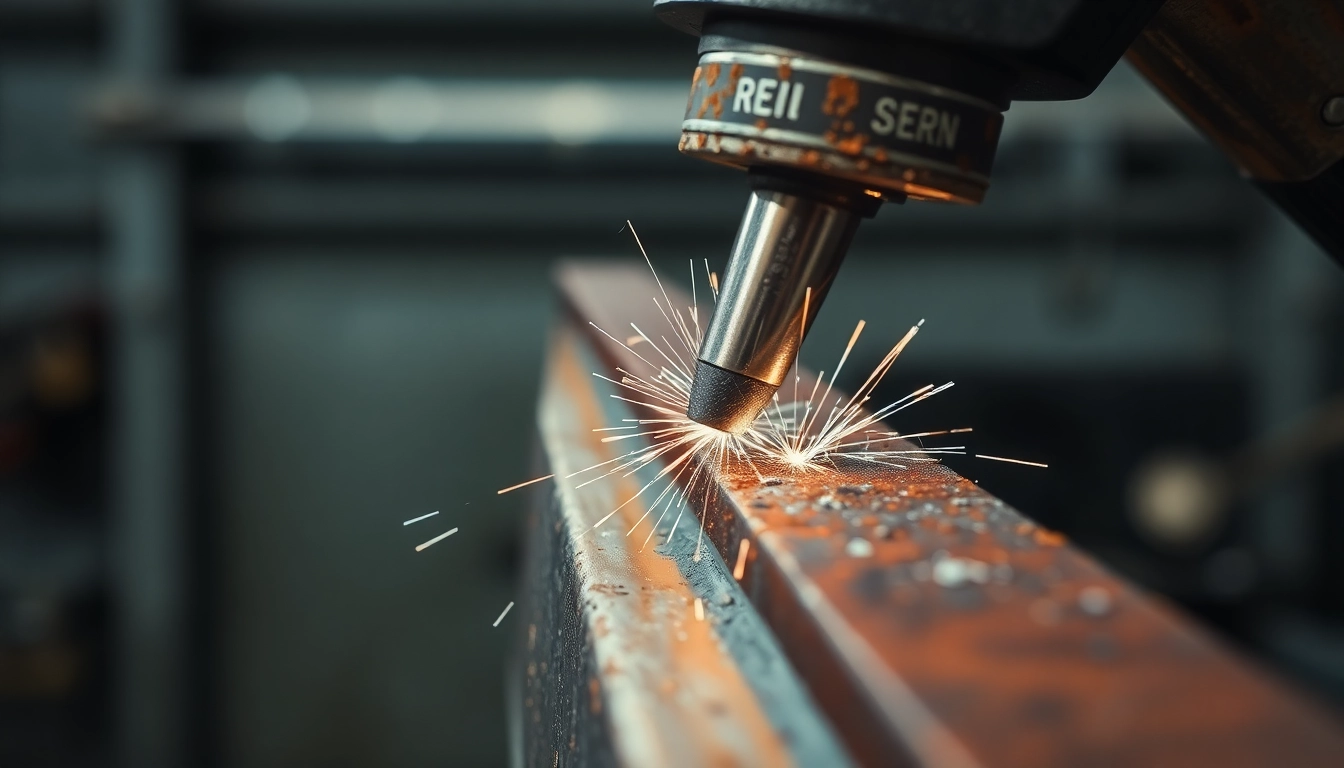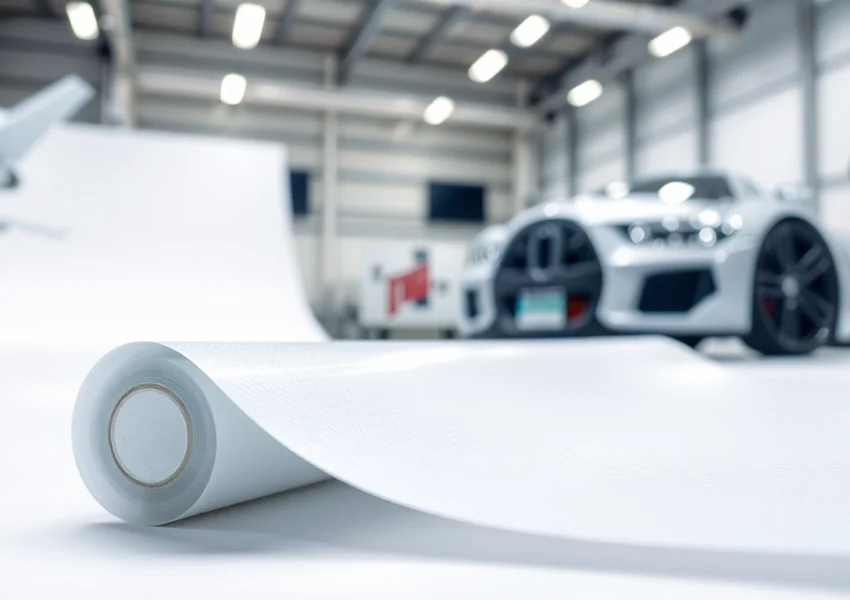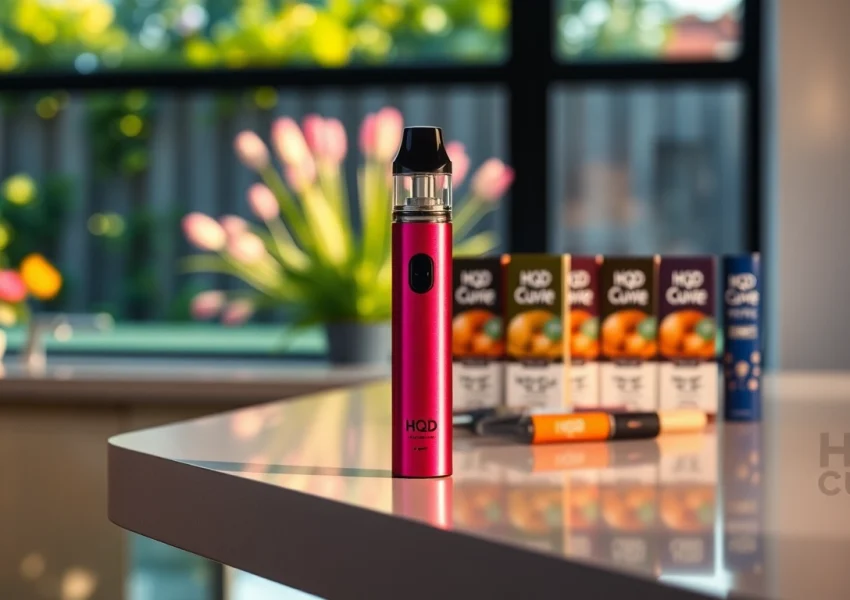Understanding Needle Guns
What is a Needle Gun?
A needle gun is a powerful tool commonly used for the surface preparation of materials, particularly metals. Unlike firearms of the same name, which are characterized by their needle-like firing pins, the needle gun in this context refers to an air-powered scaler that utilizes a row of needles to strip away unwanted contaminants like rust, paint, and mill scale from surfaces. Mechanically operated, it generates rapid strokes through pneumatic pressure, making it an efficient option for heavy-duty cleaning tasks in various industrial applications.
History and Evolution of Needle Guns
The history of needle guns is layered and multifaceted, spanning various industries and applications. Initially designed as military firearms in the 19th century, needle guns like the Dreyse needle gun were revolutionary for their time, allowing for faster loading and aiming due to the unique design of the percussion cap ignition system. However, the term “needle gun” gradually evolved in the industrial sphere, where it transformed into a tool celebrated for its effectiveness in surface cleaning and preparation.
Throughout the years, advancements in technology and materials have greatly influenced the design and functionality of these tools. Early models were primarily hand-held and required significant user effort, while modern designs feature ergonomics, adjustable speeds, and varied needle configurations to improve work efficiency and user comfort. Today, needle guns are integral to metallic surface treatment and are widely employed in industries ranging from automotive to construction.
Applications in Various Industries
Needle guns have established their foothold across a diverse array of sectors:
- Automotive Industry: Used primarily for preparing surfaces before painting or finishing and for the removal of rust and contaminations from vehicle parts.
- Shipbuilding and Maintenance: Essential for cleaning vessels where rust removal and surface preparation are critical for longevity and durability.
- Construction: Utilized for stripping paint, removing unwanted materials from concrete surfaces, and preparing structural components for further treatments.
- Aerospace: Employed in surface preparation tasks where precision and cleanliness are of utmost importance to ensure the adherence of coatings and prevent corrosion.
Types of Needle Guns
Electric vs. Pneumatic Needle Guns
Generally, needle guns can be categorized into two main types: electric and pneumatic, each with its own set of advantages and ideal use cases.
Electric Needle Guns
Electric needle guns are powered by an electric motor, making them versatile and convenient for onsite jobs where air compressors may not be readily available. They often feature adjustable settings for speed and intensify operation, allowing users to customize their approach based on different surface materials and contaminants. However, they might not deliver the consistent velocity that pneumatic models can provide, particularly for heavy-duty tasks.
Pneumatic Needle Guns
Pneumatic needle guns are driven by compressed air, making them exceptionally powerful for vigorous cleaning. They usually operate at higher speeds and can be more effective for heavy mill scale cleanup. Their robust build allows them to withstand rigorous usage, making them a preferred choice in industrial settings. However, their reliance on an air compressor can limit mobility compared to electric models.
Choosing the Right Needle Gun for Your Needs
Selecting the right needle gun hinges on a few critical considerations such as:
- Intensity of Use: Assessing the frequency and severity of tasks at hand will influence whether an electric or pneumatic model is more suitable.
- Type of Material: Different materials require specific needle configurations and power settings for optimal performance.
- Comfort and Ergonomics: Considering the design and weight of the unit is crucial, especially for prolonged use.
- Budget: Evaluating the cost against the expected usage and efficiency to identify the best overall value.
Comparative Analysis of Popular Models
When evaluating different needle gun models, it’s advantageous to look into specific features, user ratings, and overall performance. Here’s a quick comparison of a few popular options:
| Model | Type | Power Source | Stroke Rate (BPM) | Weight |
|---|---|---|---|---|
| Von Arx 23B Needle Gun | Pneumatic | Air | 3600 | 2.3 kg |
| MCGRAW Compact Needle Scaler | Pneumatic | Air | 4400 | 1.8 kg |
| Powermate Electric Needle Scaler | Electric | Electric Corded | 3000 | 2.0 kg |
How to Use a Needle Gun Safely and Effectively
Essential Safety Precautions
Operating a needle gun requires adherence to safety protocols to mitigate risks associated with high-powered tools:
- Personal Protective Equipment (PPE): Always wear appropriate PPE, including safety goggles, hearing protection, and respiratory masks, to shield against flying debris and noise.
- Workplace Safety: Ensure that the workspace is clear of hazards, and establish a safety perimeter to prevent unauthorized personnel from entering the work area.
- Tool Certification: Use tools that have been certified and meet safety standards to minimize risks associated with defects or malfunctions.
Best Practices for Operating a Needle Gun
To maximize efficiency and effectiveness while operating a needle gun, consider implementing the following practices:
- Familiarization: Before starting, thoroughly read the user manual to understand the equipment’s capabilities and limitations.
- Starting Parameters: Begin with lower power settings to gauge how the needle gun interacts with the workpiece, gradually increasing according to the material condition.
- Consistent Motion: Use a steady, sweeping motion to avoid damage to the surface while ensuring uniform coverage.
Common Mistakes to Avoid
As efficient as needle guns are for surface preparation, users frequently encounter pitfalls that can hinder performance:
- Inadequate PPE: Failing to wear proper safety gear can lead to injuries due to flying debris.
- Incorrect Needle Selection: Using the wrong needle type can lead to ineffective cleaning or damage to the underlying material.
- Neglecting Maintenance: Regular maintenance is crucial—failing to clean and check equipment can lead to premature wear and malfunction.
Maintenance and Care for Needle Guns
Regular Maintenance Tips
To ensure the longevity and effectiveness of your needle gun, adherence to a comprehensive maintenance routine is essential:
- Clean After Use: Removing dust, debris, and any remaining residue after each use prevents buildup that can affect performance.
- Inspect the Needles: Regularly assess the condition of the needles for wear and tear, replacing them if necessary to maintain scalping efficiency.
- Check Hose and Fittings: Ensure that air hoses and fittings are intact and leak-free to maintain optimal pressure and performance.
Troubleshooting Common Issues
Despite following maintenance protocols, users might encounter operational difficulties. Here are common issues and how to address them:
- Weak Performance: If the needle gun is not operating at expected capacity, check for air pressure adequacy and verify that the needles are not clogged.
- Noisy Operation: Excessive noise can indicate that needle wear has reached a significant point, or there may be a need for lubrication in moving components.
- Inconsistent Work Quality: If uneven surfaces result from the needle gun’s operation, assess the user’s technique and the condition of the needles being used.
When to Seek Professional Repairs
While routine troubleshooting and maintenance can manage most issues, several signs warrant consultation with a professional:
- Frequent Breakdowns: If the unit frequently malfunctions despite regular maintenance, it may indicate deeper mechanical issues.
- Increased Operating Noise: A sudden change in operating volume that continues over multiple uses often signals significant repair needs.
- Damage Assessment: If any components show signs of significant damage, such as cracks or bends, professional evaluation is advisable to avoid safety risks.
Future Trends in Needle Gun Technology
Innovations on the Horizon
The needle gun industry is poised for change as innovations continue to emerge. Expected advancements include:
- Smart Technology Integration: The incorporation of IoT capabilities enables remote monitoring and diagnostics, significantly enhancing operational oversight.
- Enhanced Ergonomics: Future models are likely to prioritize user comfort through better weight distribution, vibration reduction systems, and customizable grips.
- Multi-Functional Operations: New products may allow versatility in tasks, transitioning easily from scalping to other surface treatment operations, thereby increasing utility.
Sustainability in Needle Gun Production
As sustainability becomes paramount in manufacturing, needle gun production is expected to adopt environmentally friendly practices:
- Materials Selection: An increased focus on using sustainable materials that are more recyclable and energy-efficient in production could become standard.
- Reducing Energy Consumption: Innovations aimed at decreasing power usage in both pneumatic and electric needle guns are expected to gain traction.
Market Forecast and Industry Growth
The needle gun market is projected to grow due to the rising demand for efficient surface preparation tools driven by advancements in industry standards for safety, efficiency, and sustainability. As more sectors recognize the productivity gains achievable through high-performance surface treatment equipment, investment in needle gun technology is expected to rise significantly. Analysts predict a compound annual growth rate (CAGR) in the industry driven by factors such as increased construction activities, automotive production, and maintenance needs in various sectors. Businesses that stay ahead through adopting improved needle gun technologies will likely outperform their competitors.






